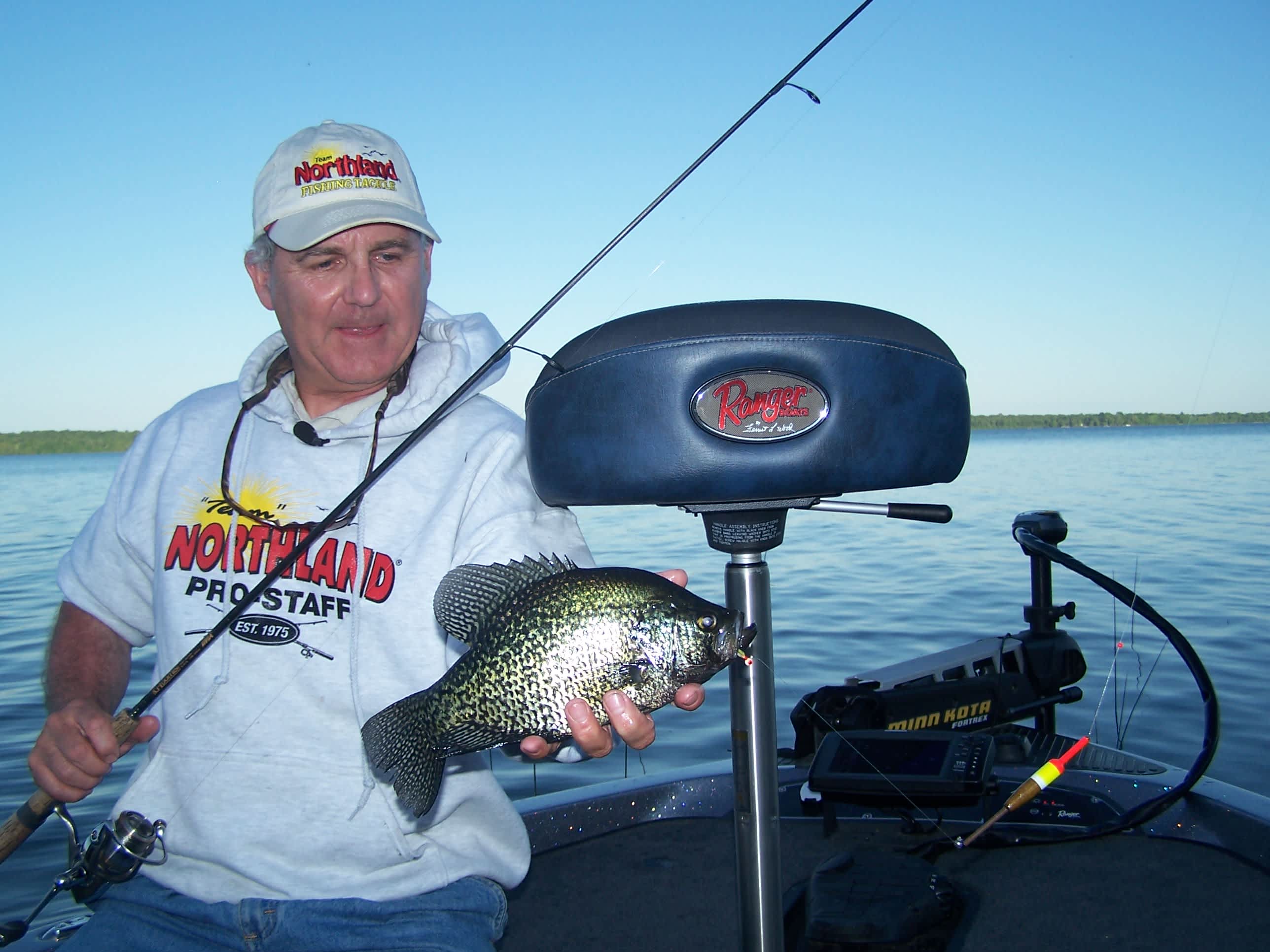Fishing for Midwest Crappies in the Fall
OutdoorHub Contributors 09.12.13

Almost anyone who enjoys freshwater fishing enjoys catching crappies. Crappies are great on the table, they’re abundant in many waters, they’re visually appealing, and, best of all, when you get on them they can be willing biters. In the fall months, if you can find crappies they will provide lots of action.
Crappies can be kind of a mysterious fish, especially the big ones. They can be easy to find and catch in the spring when they’re in the shallows spawning, but in many bodies of water they seem to disappear after the spawn. They reappear in the fall if you know where to look—here’s some usual hot spots in lakes and rivers.
In many lakes, you’ll find the crappies in the deeper areas of the lake. It’s not unusual to find them in water 25 to 30 feet deep. Much of the time, they’ll be in an area that has no structure or unusual features to attract the fish. They’ll just be out in the basin of the lake within a foot or two of the bottom, for example. They could be relating to baitfish or bugs, but most of the time they’ll be where they are for no apparent reason other than they’ve got to be somewhere.
The best way to locate these open water, deep crappies is to cruise an area with a close eye on the depth-finder. In this case, the depth-finder truly becomes a fish-finder. Don’t stop to fish until you see what you suspect to be crappies. They’ll usually be right on the bottom in this situation, so drop a jig on them; they’ll usually eat it.
If you fish in rivers that have crappies, look for brush or wood in the deeper shoreline stretches. One of the best ways to locate potential crappie hot spots is to simply go along a shoreline looking for the steepest bank. Steep banks usually indicate deeper water. Look for brush or trees extending out from the shoreline and lying in the water. Sometimes the crappies will be on the outer edge of the cover, other times they’ll be right in the middle of the cover. Again, using a jig will be a good way to get them to bite.
Whether you’re fishing a river or a lake, if the crappies are aggressive, jig color isn’t that critical. If they’re finicky, however, selecting the proper color can be the difference between a few fish and quite a few fish. Color preferences can change from lake to lake and even from morning to afternoon. The deeper water in lakes and the stained water you find in rivers often mean that a brighter color will often be best, however. Last year, on the Mississippi River in stained water, an Impulse Water Bug in the bubblegum color rigged on a Weed-Weasel Jig was hard to beat. Because of the brush-guard on the Weed-Weasel, we could swim it through the heavy brush where the crappies were holding.
“Paper-mouth” is a nickname for crappies because of their very thin and delicate mouth. Regardless of whether you’re going to keep or release the ones you catch, the bigger ones should be netted just to protect them. Frabill’s Conservation Series of nets are perfect for crappies, especially if you’re going to put them back.
If you’re on a lake or river that has crappies in the next few weeks, try these ideas. If you do, and there are crappies around, you’re probably going to catch them.
To see the new 2013 episodes of Fishing the Midwest television online, go to fishingthemidwest.com. Join us at Facebook.com/fishingthemidwest.

